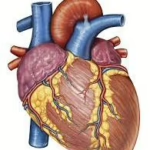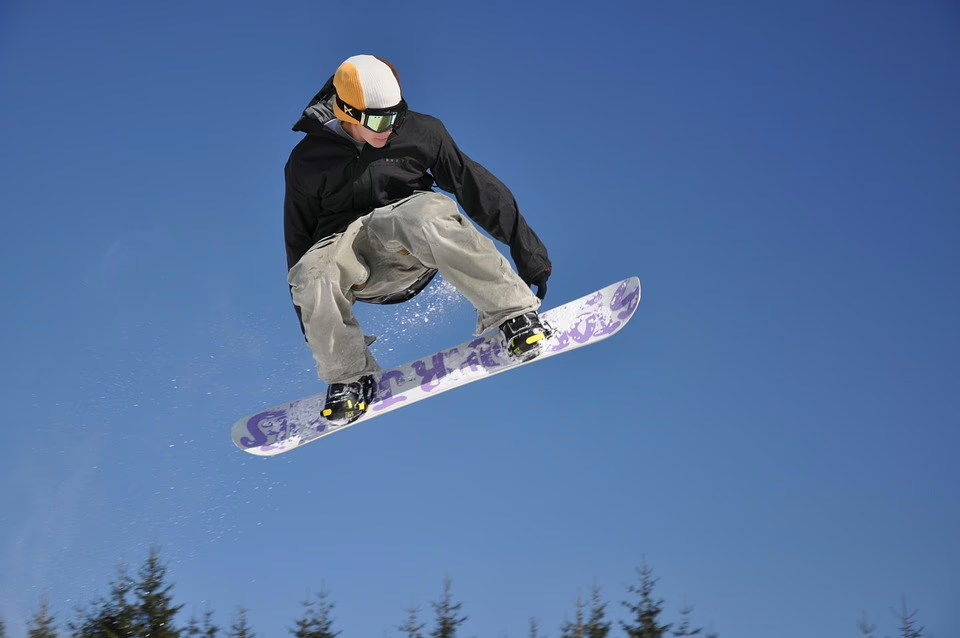The Safety Net: Innovations in Equipment for Air Sports
Introduction
Air sports have captivated enthusiasts worldwide, from skydiving and paragliding to hang-gliding and paramotoring. These exhilarating activities offer a unique blend of freedom and adrenaline, allowing participants to experience nature from a breathtaking perspective. However, as thrilling as they are, air sports involve inherent risks that have claimed lives and caused injuries. Innovations in safety equipment have emerged as a crucial response to these dangers, enabling athletes to engage in their passions with a greater sense of security.
This article explores the latest advancements in safety equipment for air sports, examining how technological innovations are reshaping the landscape of aerial activities. We will delve into specific equipment, analyze their effectiveness, and consider future trends in the industry.
The Evolution of Safety Equipment in Air Sports
Safety equipment has evolved significantly over the years, reflecting advancements in technology, materials science, and aerodynamics. Older generations of safety gear, such as parachutes and harnesses, often prioritized basic functionality. However, the contemporary emphasis on user experience, comfort, and enhanced safety features has resulted in transformative innovations.
Parachute Development
Parachutes have been a fundamental component of air sports safety since the inception of these activities. Innovations in fabric technology, such as the development of lightweight, ripstop nylon, have allowed parachutes to be both durable and easy to pack. Furthermore, advancements in design, such as the introduction of slider systems and advanced deployment bags, have improved the reliability of parachutes during freefall.
Most notably, the development of “base parachutes” and “loaded parachutes” has allowed skydivers to tailor their descent rates. Base parachutes are designed for shorter jumps, reducing the time spent in freefall, while loaded parachutes enable increased control during landing. One notable advancement is the deployment of equipped automatic activation devices (AAD), which deploy the parachute at a predetermined altitude should the skydiver fail to do so.
Automatic Activation Devices (AAD)
The introduction of AADs has been nothing short of revolutionary. These electronic systems are designed to ensure that a parachute deploys automatically at a set altitude if the skydiver does not activate it manually. Since their inception, AADs have dramatically reduced fatalities in skydiving accidents, providing peace of mind for both novice and experienced jumpers alike.
Harnesses and Restraints
Harnesses have also seen substantial innovation over the years. Modern harness designs utilize advanced materials that are lightweight and strong, providing both comfort and security. For instance, the integration of quick-release buckles and reinforced stitching in harnesses allows for rapid attachment and detachment, optimizing time spent before a jump.
Paragliding Innovations
In paragliding, safety advancements have become particularly crucial. The adoption of modified wing designs has enhanced stability and performance, mitigating risks associated with turbulence. For instance, the ‘mini-rigid’ wing design includes a stiff leading edge, which significantly reduces the likelihood of collapses during flight.
Moreover, cutting-edge technologies such as GPS tracking and flight data recorders (FDR) have entered the realm of paragliding. These devices allow pilots to monitor their routes and analyze flight performances post-flight, ultimately enhancing safety and skills over time.
Emerging Technologies Enhancing Safety
Wearable Technology
Wearable technology has made significant strides in the safety arena, presenting opportunities for real-time monitoring of equipment and performance. Devices such as smart helmets have been developed to provide pilots with critical information without obstructing their view. Data transmitted in real-time can include altitudes, speeds, and other performance metrics that can alert users to potential dangers.
Moreover, wearable technologies equipped with AI algorithms can analyze this data and suggest optimal maneuvers in the air. Safety protocols can be integrated directly into the wearable device, thereby reinforcing safer practices among air sports enthusiasts.
Communication Devices
Communication devices have emerged as vital tools for enhancing safety during air sports. Innovations in radio technology enable skydivers, paragliders, and hang gliders to communicate with their teams seamlessly. These radios are designed to be lightweight and compact, allowing athletes to stay connected without sacrificing performance.
One significant development is the introduction of emergency locator systems that operate via GPS satellites. In the event of a mishap, these devices can immediately relay the athlete’s precise location to rescue teams, drastically reducing recovery times in emergencies.
Enhanced Simulation Training
Modern simulation technologies have changed the landscape of training for air sports. Virtual reality (VR) and augmented reality (AR) training systems allow enthusiasts to practice jumps and maneuvers in a simulated environment before attempting them in real life. These innovations provide a controlled atmosphere for skill-building while drastically improving safety awareness.
VR simulations can replicate various scenarios an athlete may encounter, such as sudden weather changes or equipment malfunctions. The opportunity to practice in a simulated space provides both novice and experienced athletes with vital practice and confidence.
Social and Regulatory Impact
As innovations in safety equipment continue to evolve, the social and regulatory frameworks surrounding air sports also require adaptation. The safety standards governing these activities must reflect technological advancements, ensuring continued participant security, while fostering growth within the sports community.
Industry Standards
The development of industry standards is critical in ensuring that all safety equipment meets stringent requirements. Organizations such as the United States Parachute Association (USPA) and the Fédération Aéronautique Internationale (FAI) have established guidelines for parachute equipment, ensuring that innovations align with safety protocols.
Regular inspections and certifications of safety equipment further support industry standards, providing users with confidence in the gear they utilize. For instance, newly developed harnesses and parachutes undergo rigorous testing before being approved for general use.
Community Initiatives
Safety innovations in air sports are further supported through community initiatives focusing on education and training. Workshops, seminars, and demonstration events are held to inform athletes about the latest safety equipment advancements and their specific functionalities.
Moreover, mentoring programs connecting seasoned athletes with newcomers foster a culture of safety and shared knowledge. Mentorship can be invaluable in understanding the complexities of new equipment and helps in mitigating risks associated with inexperience.
The Future of Safety Equipment in Air Sports
Looking forward, the future of safety equipment in air sports is rife with exciting possibilities. Ongoing research and development promise to yield smarter, more automated solutions designed to enhance safety and performance.
Drone Integration
Drones are poised to revolutionize air sports safety in various applications, including real-time monitoring and rescue assistance. Drones equipped with cameras can assist in tracking athlete movements and can be deployed in emergencies to assess conditions or locate lost individuals.
Moreover, some developers are exploring the use of drones as a safety net during performances. By deploying drones with safety nets in risky environments, aerial athletes can mitigate potential falls or crash incidents, providing another layer of security.
Advanced Materials
The ongoing exploration of advanced materials such as Smart Textiles and bioengineered fabrics promises to enhance safety in air sports significantly. These materials can adapt to environmental changes, offering increased thermal protection or enhanced durability and tear resistance.
For example, smart textiles can be integrated into parachutes and harnesses, providing real-time data on airflow, pressure, and structural integrity. This data could potentially indicate when equipment requires routine maintenance or replacement, promoting proactive safety measures.
Personal Safety Systems
Future personal safety systems designed specifically for air sports enthusiasts could integrate AI technology for predictive safety mechanisms. These systems could analyze weather data, flight paths, and individual performance metrics to provide personalized recommendations that enhance safety during flights.
In the long run, these systems may act as preventative measures, proactively alerting athletes to potential hazards before they become critical.
Conclusion
The safety net of innovations in equipment for air sports continues to grow, offering athletes enhanced safeguards as they ascend into the skies. Through advancements in technology, materials, and design, enthusiasts can enjoy the adrenaline rush of their passions with a clearer focus on safety and security.
While the thrill of aerial pursuits will always carry inherent risks, the ongoing evolution of safety equipment serves as a powerful reminder that progress in this domain is essential. As air sports continue to grow in popularity, embracing innovative approaches to safety ensures that the skies remain accessible for generations to come.
Embracing innovation not only protects athletes but also fuels the development of the air sports industry as a whole, encouraging newcomers while safeguarding the experienced. Moving forward, collective industry efforts, driven by technological advancement, will continue to prioritize safety, promising an exhilarating yet secure experience for all.
References
- United States Parachute Association. Safety Equipment Guidelines. USPA, 2022.
- Fédération Aéronautique Internationale. “2023 Safety Standards and Regulations.” FAI, 2023.
- Williams, John. “Transformative Technologies in Paragliding Safety Gear.” Aviation Safety Journal, vol. 15, no. 4, 2023, pp. 243-256.
- Smith, Lisa. “Wearable Technology: The Future of Air Safety.” Journal of Sports Engineering, vol. 8, no. 2, 2022, pp. 112-118.
- Brown, David. “Advanced Simulation Training in Air Sports.” International Journal of Aeronautics, vol. 5, no. 1, 2023, pp. 59-76.
By leveraging the insights from modern technology and the wisdom within the air sports community, we can forge a safer and more enriching environment for all who dare to take flight.


























Add Comment